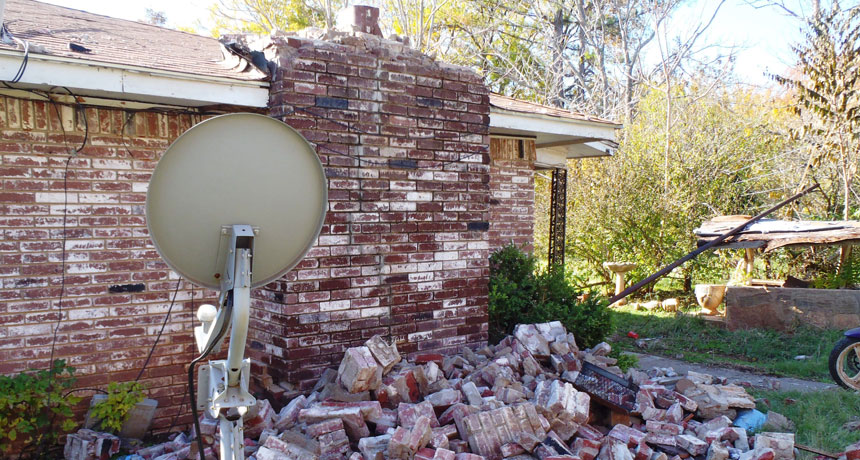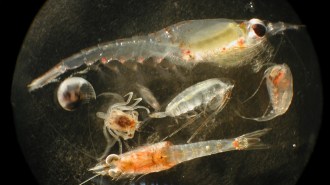50 years ago, scientists tried to control earthquakes with earthquakes
Excerpt from the February 8, 1969 issue of Science News

SHAKIER GROUND Oklahoma has experienced an increase in earthquakes since 2009, including a magnitude 5.7 earthquake in 2011 that damaged homes like this one. Scientists think that quake may have been caused by wastewater injections into the ground.
Brian Sherrod/USGS
 The Federal Council for Science and Technology … recommends a 10-year national earthquake research program to find ways to predict when and where quakes will strike and … [how to] defuse and prevent earthquakes, or at least modify them. Basically, the idea is simple: Inject fluid into underground rock, release the strain and produce a gradual series of tiny earthquakes or tremors instead of one violent jolt. —
The Federal Council for Science and Technology … recommends a 10-year national earthquake research program to find ways to predict when and where quakes will strike and … [how to] defuse and prevent earthquakes, or at least modify them. Basically, the idea is simple: Inject fluid into underground rock, release the strain and produce a gradual series of tiny earthquakes or tremors instead of one violent jolt. — 






